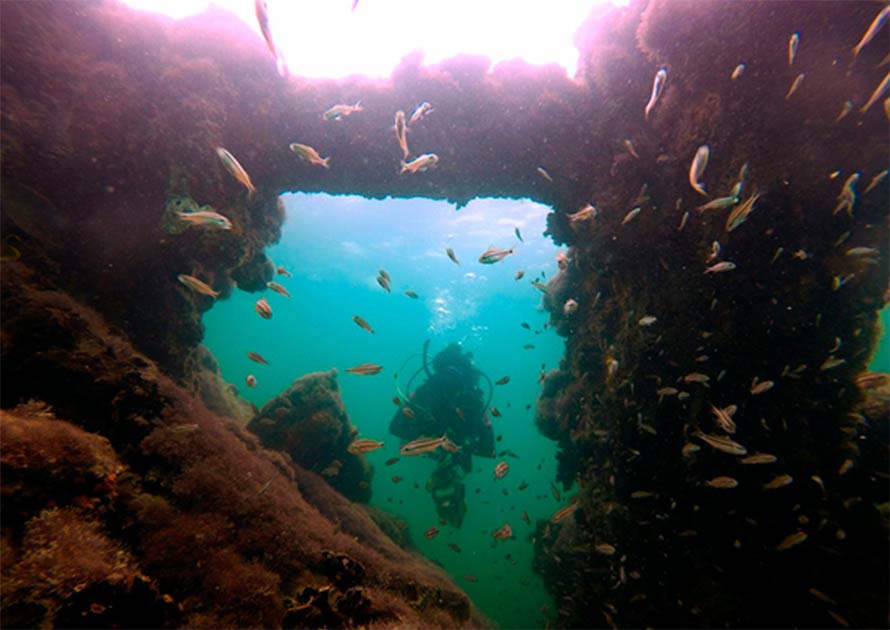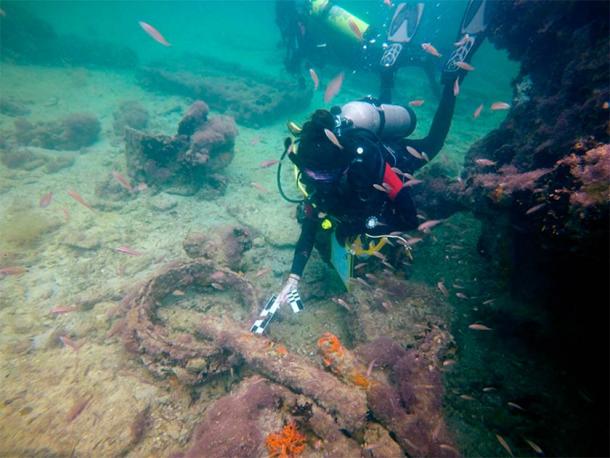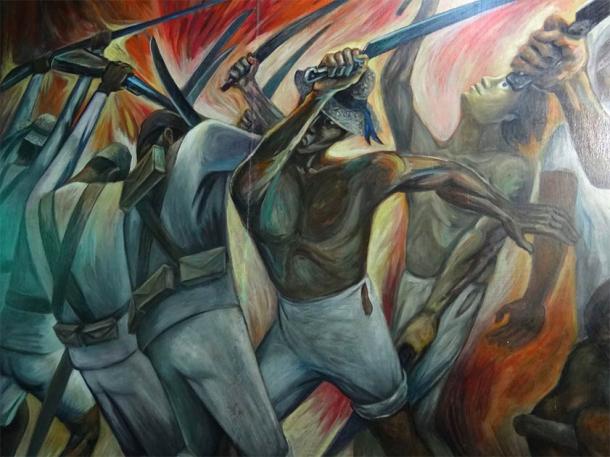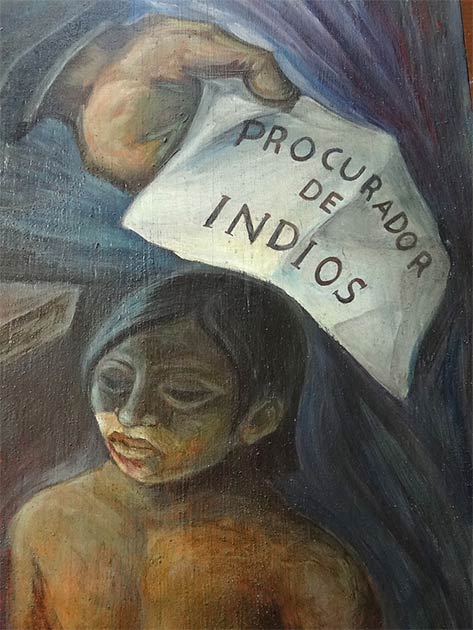
This is a sharp reminder that slavery was still practised against indians in Maya land. Thus we have a forty year insurrection.
That is plenty of cause for a general uprising.
Recent reports strongly suggests that huge numbers are been enslaved in SE Asia today. Keep your eyes on all that as the scale will be staggerting and aqnything we know pales.



Wreck of Maya Slave Ship Found in Gulf of Mexico
18 SEPTEMBER, 2020 - 18:04
https://www.ancient-origins.net/news-history-archaeology/maya-slave-ship-0014278
A shipwreck identified in the Gulf of Mexico has thrown a light on a forgotten and dark episode in Mexican history. Archaeologists have identified a 19th-century slave ship. Before it sank, this vessel was involved in the enslavement of indigenous Maya people, during a bloody revolt known as the War of the Castes in Mexico’s Yucatan Peninsula .
The discovery was made by marine archaeologists and other experts within the framework of a project to investigate the Yucatan Peninsula and its waters. The team were alerted to the possibility of a sunken slave ship by the stories told by local people in the once important port of Sisal. They were led to the site of the wreck two nautical miles off the coast of Sisal by a fisherman from the area.

Marine archaeologist inspecting the bow area of the shipwreck. Originally named “Adalio”, it has now been identified as being “La Unión”, a steamship used to transport Maya slaves to Cuba. ( Helena Barba / INAH )
War of the Castes: Indigenous Revolt in the 1800s
Marine archaeologists, from Mexico’s National Institute of Anthropology and History, found a 19th-century paddle steamer in the sand. “Initially, it was named ‘Adalio’ in homage to the grandfather of Juan Diego Esquivel, the fisherman who guided archaeologists to the site,” reports Phys.Org. The archaeologists were not sure about the identity of the ship, but locals helped them greatly in their research.
They told the experts about a time when local Maya people were being sold into virtual slavery. This occurred during the so-called War of the Castes, an episode when the Maya rose against landowners who had reduced them to the status of serfs. This was one of the last great indigenous revolts in Latin America and it lasted from 1847 to 1901. Helena Barba-Meinecke, an archaeologist from the National Institute, told ABC News that the “grandparents and great-grandparents of the inhabitants of Sisal told them about a steamship that took away Mayas during the War of the Castes.” The fisherman who guided them to the site is the descendent of someone who witnessed indigenous people being carried away into slavery.

Mural of the War of the Castes which can be visited at the Municipal Council Building in Valladolid, Yucatan. ( Adam Jones, Ph.D. / CC BY-SA 3.0 )
First Shipwreck to Provide Evidence of Maya Slavery
An investigation of the shipwreck yielded a host of everyday objects from the mid-19 th century. The vessel is an early example of a steamship which sank after its boiler exploded. Its nearly intact hull now lies in over 20 feet (7 m) of water. Over the course of three years, experts studied documents from the period in local archives, before being able to establish that “the ‘Adalio’ is indeed the steam ‘La Unión’,” reports Cultura. La Unión sank in September 1860. Further evidence for this was “the similitude between the technology seen in the site and its description on the ship's plans; and even the location of the wreck itself.”
La Union was a Spanish ship that regularly sailed between the Yucatan and Cuba. It mainly carried passengers and materials used in rope making. However, it was also involved in the transportation of Mayas to Cuba, where they were treated as virtual slaves. Many of these were rebels captured during the War of the Castes. Many impoverished and bankrupt Maya were duped into boarding the ship, with promises of land and work. In Phys.Org Barba-Meinecke explains that “each slave was sold to a middleman for 25 pesos, and they resold them in Havana for as much as 160 pesos, for men, and 120 pesos for women.”

Detail from mural showing the procurer of indigenous slaves at the Municipal Council Building in Valladolid, Yucatan. ( Adam Jones, Ph.D. / CC BY-SA 3.0 )
Proof That Human Trafficking of Maya Slaves Was Still Occurring After 1860
The enslavement of indigenous people occurred despite slavery being illegal in Mexico since its independence from Spain and the prohibition of the practice by President Benito Suarez in 1860. However, Mexico was in a near state of civil war at this time and rule of law was almost non-existent. In 1860 the steamboat was apprehended with several Maya on board, including children, who were being sent to Cuba. This did not, however, stop its trade in humans.
Cultura reports that when the vessel exploded, it prompted the Mexican authorities to pay “more attention to this issue… in order to prevent people’s trafficking on the routes to Cuba.” It is believed that seventy people, crew and passengers, died in the explosion that sent the vessel to the bottom of the Gulf. “It must be noted that the previous casualty numbers do not include Maya slaves, since they were not considered persons but merchandise,” states Cultura.
Making Contact: Finding the Descendants of the Maya
Barba-Meinecke states that “the next stage of research would involve trying to find their descendants. Researchers plan to travel to Havana, where there is a neighbourhood called Campeche,” reports Phys.Org. It is believed that some of the people who reside in Campeche are the descendants of the Maya slaves. She also is quoted by MSN News as explaining that “research has to be done so these (Maya) people can know where their grandparents or great-grandparents are.”
A number of slave ships associated with the African slave trade have been found in recent years by marine archaeologists . The importance of this most recent discovery lies in the fact that it is the first one linked to the lesser-known slavery of indigenous people in the Americas. This is helping many in Mexico and elsewhere become more aware of a dark chapter in their country’s past.
Top image: The shipwreck found in the Gulf of Mexico has been identified as being the wreck of La Unión, a steamship used to take Maya slaves to Cuba in the aftermath of the War of the Castes. In the image a marine archaeologist inspects the detail of the seesaw steam engine off the coast of Sisal, Mexico. Source: Helena Barba / INAH
By Ed Whelan
No comments:
Post a Comment